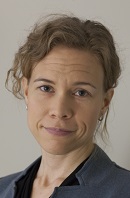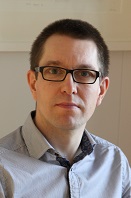
Four SRC programmes have reached halfway point – how have the projects progressed?
The SRC programmes that started in 2019 are now halfway through their six-year programming cycle. Last spring, the Strategic Research Council (SRC) examined the progress of projects in the programmes when making decisions on further funding. How did the projects succeed in launching their research and interaction work in their first funding period? What kinds of results have the projects achieved and which measures have they taken to promote their impact?
SRC funding supports long-term and programme-based research that provides solutions to significant challenges in Finnish society. SRC not only provides research funding, but also monitors and assesses the impact of the research it funds. One of the monitoring tools is the mid-term review carried out at the midway point of six-year SRC programmes.
In spring 2022, a mid-term review was carried out for twelve projects operating in four programmes that started in 2019: Towards a Sustainable, Healthy and Climate-Neutral Food System (FOOD), Innovative Materials and Services to Promote Resource Wisdom and Sustainable Development (IMPRES), the Changing Role of Public Authority and the Potential for Steering Society (STEER) and Culture in an Increasingly Technologically Driven Society (CULT). As the mid-term review showed that all of the projects had progressed as expected, SCR granted them further funding until the end of August 2025.
“Once again, it’s been great to notice that the multidisciplinary approach, long time span and topical themes of projects operating under SRC funding have laid an excellent foundation for both scientific performance and societal impact,” says Anu Kaukovirta, Chair of the SRC. “The impact and visibility of the projects have been actively and innovatively supported by communication, interaction measures and programme-level cooperation,” Kaukovirta says.

Figure 1. Mid-term review of the CULT, FOOD, IMPRES and STEER programmes summarized in numbers.
What kinds of results have the projects produced?
Based on the mid-term review, the scientific work of the projects has been successful. Peer-reviewed scientific publications were reported per 15 to 89 projects. The total number of publications was 26 to 159 publications including all publication types. While the main focus of publishing has been on scientific publications, but hundreds of publications aimed at the professional audience and the general public have also been reported. Work created in artistic and design activities was also reported (Figure 1). However, the publication profiles of the projects varied considerably; some projects reported almost exclusively peer-reviewed scientific publications, while publications aimed at a professional audience or the general public were emphasised in other projects’ publication profiles. A significant share of publications is openly available to everyone free of charge.
Nearly all of the projects have obtained significant new research funding. Project researchers have received funding from Horizon Europe, Business Finland, the Academy of Finland’s funding schemes and many foundations and ministries. One new form of SRC funding was also mentioned.

Figure 2. Publication profile of SRC programme projects that started in 2019.
The projects have been building multidisciplinary cooperation networks within and outside the scientific community. Nearly all of the projects have engaged in international research cooperation and also collaborated with non-research organisations. More than half of the projects reported that they were cooperating with companies. Several projects have an international Scientific Advisory Board, an interaction committee consisting of Finnish experts, or both. The projects have entered into a partnership agreement with up to 50 different parties.
In addition to the actual partners, the projects have named dozens of partners with whom they have exchanged information and views on topics such as the research subject or (preliminary) research findings and their utilisation. The stakeholders involved in the interaction represent diverse groups of actors in the public, private and third sectors. All the projects have actively interacted with one or typically several ministries. The projects have engaged in cross-sectoral interaction with the ministries: the aim is to create impacts in various administrative branches (see. Figure 2).

Figure 3. Interaction with various ministries reported by CULT, FOOD, IMPRES and STEER projects. The darker the colour, the more projects in the programme reported interacting with the ministry in question.
What has the multidisciplinary cooperation of consortia achieved?
One of the special features of SRC funding is the multidisciplinary and multi-agent nature of projects: they consist of research groups operating in different disciplines and organisations that form a temporary consortium. What information will the mid-term review of spring 2022 provide about this multidisciplinary cooperation? What kind of added value has it brought to pursuing scientific and societal impacts of research? We will highlight a few examples below.
Interdisciplinary tools
Many projects have taken on creating a set of cross-disciplinary concepts, approach or methodology that enables researchers and other actors to tackle the significant challenges facing Finnish society more efficiently and comprehensively than before.
For example, in the FOOD programme, the JUST-FOODproject has combined philosophical justice analysis with research in other fields of science and created concrete principles and criteria for taking fairness into account in the transition to a climate-wise and healthy food system. An aim is to achieve scientific impacts, for example, in a theme issue of an international scientific journal on sustainability transition. On this basis, Just food has been promoting a new kind of discussion between different food system operators and also communicating about a fair food transition to the general public. During the further funding period, the aim is to build a tool that will enable food system operators to assess and develop the sustainability of their climate actions from the perspective of fairness. They have already obtained new research funding from e.g. a SRC programme Climate Change and Humans (CLIMATE).
The MULTA project has also been developing interdisciplinary tools for the challenges in the food system but in a very different area. By combining research and measurement methods from different sectors, a system for assessing and verifying the carbon sequestration and climate impacts of fields has been developed, which supports both further research and practical applications. The results have been published in prestigious international journals, and used to create the open-data-based Pelto observatory, which anyone can use to monitor the carbon sequestration of arable land in real-time and the factors affecting it. Among others, the research of the project is already advanced at the Atmosphere and Climate Competence Center ACCC, which is one of the Academy’s flagship projects.
Read also: A blog post from the MULTA project: We need more strategic research
Convincing research data
Many of the projects have utilised multidisciplinary cooperation to compile exceptionally extensive or diverse research data. The focus of the first funding period was on the producing and joining data sets and a preliminary analysis of data. In many projects, data collection and stakeholder cooperation are closely linked, as involving stakeholders in research is part of the research design.
For example, the SmartLand project of the STEER programme has involved collecting versatile data to answer questions related to the development of land use policy. The projects have utilised multidisciplinary case studies to study the impact of land use instruments on the availability and price of housing, the differentiation of residential areas and the climate impacts of cities together with 20–30 municipalities. The results have been published in prestigious scientific journals and publications aimed at the professional audience. The project has also launched new partnership model funding from Business Finland. During the further funding period, the focus will be shifted to studying the combined effects of different land use policy instruments and producing recommendations and tools.
Producing and analysing extensive data has also been at the core of the BioColour project of the IMPRES programme during the first funding period. The project focuses on the entire production chain of dyestuff. Cooperation between chemists, material scientists, biologists, social scientists and business partners has been used to seek new methods for the production and use of natural dyes. Extensive laboratory research was used to develop a colour palette of bio-dyes and a database of bio-dyes will be compiled based on the research findings, the first of its kind also at the international level. The results have been published in both scientific and professional publications and in exhibitions aimed at the general public. Life cycle calculations and political advocacy will also be carried out during the further funding period.
Insights and visibility
The multidisciplinary approach is also visible in many projects as cooperation between groups studying the same topic or set of problems from different perspectives. This has brought new societal relevance and visibility to the research and enabled making observations, some of which have been surprising.
For instance, the parties of the DigiConsumers project that examines young people as consumers in a digital environment carried out under the CULT programme have been analysing both existing and new data in interdisciplinary collaboration and published a lot together. The research has utilised the theories and methods of sociology, psychology, education, economics and information system science. The results have been published not only in scientific forums in these fields, but also to the professional audience and the general public. An interesting example of these is the TalousTandem game. The project has engaged in close cooperation with the Bank of Finland in creating a strategy for economic competence and the establishment of Financial Literacy Centre. The researchers have received wide-ranging societal visibility, and their expertise has been used in Parliament and in several expert bodies and networks.
The research carried out in the SRC programmes and its impacts will be assessed in more detail after the end of the programmes. The CULT, FOOD, IMPRES and STEER programmes will continue until autumn 2025. The good results of the first funding period give reason to keep the expectations for the programmes high.
More information
- Culture in an Increasingly Technologically Driven Society, CULT (2019–2025)
- Towards a Sustainable, Healthy and Climate-Neutral Food System, FOOD (2019–2025)
- Innovative Materials and Services to Promote Resource Wisdom and Sustainable Development, IMPRES (2019–2025)
- The Changing Role of Public Authority and the Potential for Steering Society, STEER (2019–2025)

